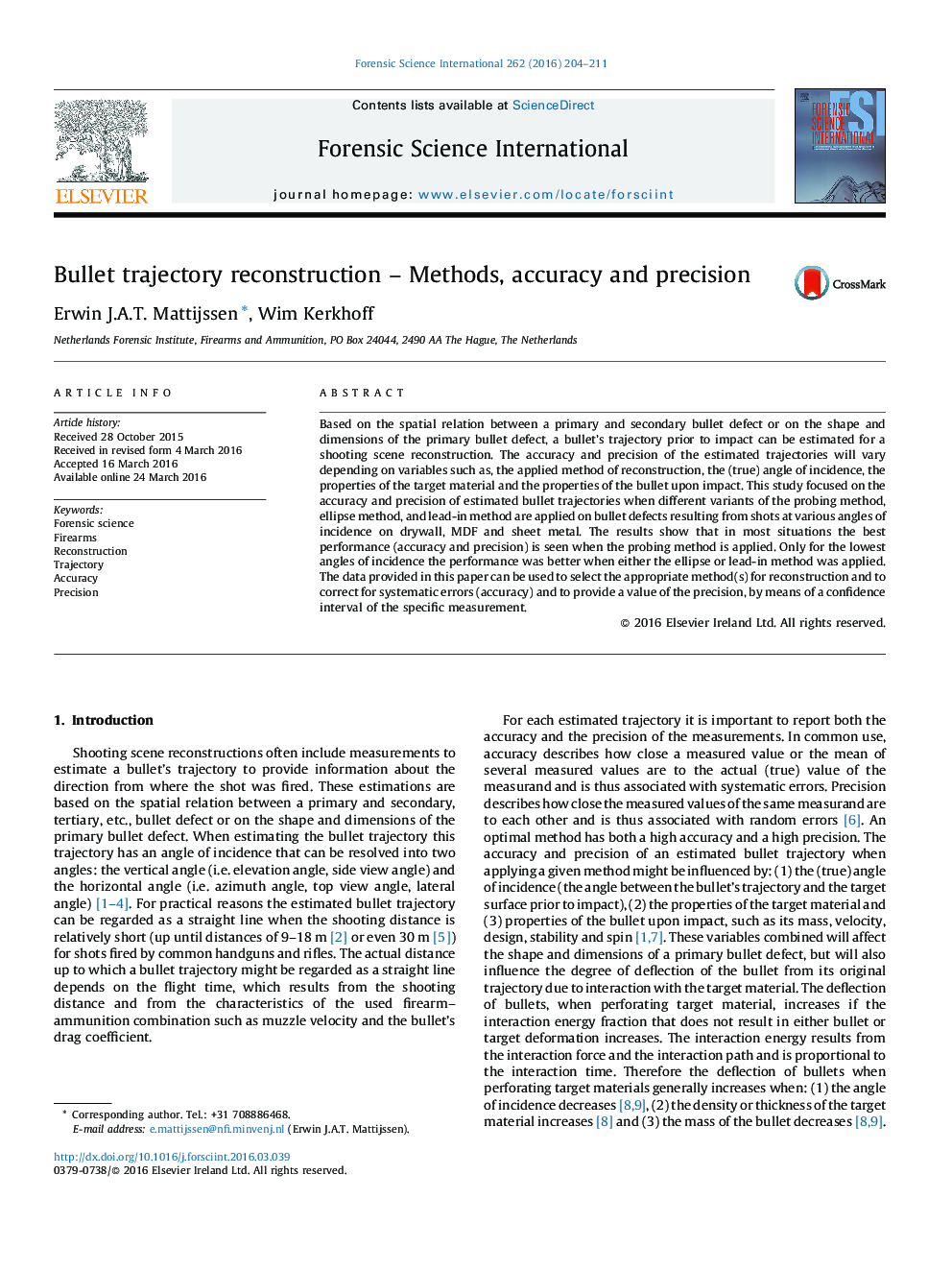| کد مقاله | کد نشریه | سال انتشار | مقاله انگلیسی | نسخه تمام متن |
|---|---|---|---|---|
| 95109 | 160414 | 2016 | 8 صفحه PDF | دانلود رایگان |
• The probing, ellipse and lead-in method can be used to estimate bullet trajectories.
• For most target materials and angles the probing method provides the best results.
• For the lowest angles the performance of the ellipse or lead-in method is better.
Based on the spatial relation between a primary and secondary bullet defect or on the shape and dimensions of the primary bullet defect, a bullet's trajectory prior to impact can be estimated for a shooting scene reconstruction. The accuracy and precision of the estimated trajectories will vary depending on variables such as, the applied method of reconstruction, the (true) angle of incidence, the properties of the target material and the properties of the bullet upon impact. This study focused on the accuracy and precision of estimated bullet trajectories when different variants of the probing method, ellipse method, and lead-in method are applied on bullet defects resulting from shots at various angles of incidence on drywall, MDF and sheet metal. The results show that in most situations the best performance (accuracy and precision) is seen when the probing method is applied. Only for the lowest angles of incidence the performance was better when either the ellipse or lead-in method was applied. The data provided in this paper can be used to select the appropriate method(s) for reconstruction and to correct for systematic errors (accuracy) and to provide a value of the precision, by means of a confidence interval of the specific measurement.
Journal: Forensic Science International - Volume 262, May 2016, Pages 204–211
